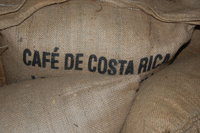
Coffee is grown in what is known as the “equatorial belt” which is the area that lies between the Tropics of Cancer and Capricorn. This includes about fifty countries around the world but the more celebrated coffees hail from East Africa, Latin America and the Asia Pacific regions.
Expert coffee professionals involved in the trade are able to “taste the place” and identify a coffee’s origin and describe it in terms similar to those of a wine connoisseur. Coffee is a product of its environment and takes on the local characteristics produced by rainfall, temperature, and soil quality. Let’s look a little further into the major coffee growing regions:
Latin America
Well, Frank Sinatra said it all way back in the sixties, or earlier, in his hit “The Coffee Song” … “They’ve got an awful lot of coffee in Brazil”. Well, he was right then and it’s still true today. Brazil is the world’s leading producer, and sources around a third of the world’s coffee. Harvesting takes place mainly from June to September when the coffee cherries are cleaned and dried in the sun for around two weeks before being hulled and then bagged in 60k bags.
Columbia follows very closely behind in production with Guatemala, Mexico and Costa Rica also playing a significant role. The coffees from this region are high in quality and considered to be medium bodied, mild and aromatic in flavor.
Africa
Ethiopia has claim to being the birthplace of Arabica coffee and commands respect with its long history of coffee growing. Some of the world’s finest coffees are sourced here, where coffee is an integral part of the culture. Methods have not altered greatly since the 10th century, and almost all the cultivating is done by hand.
Kenyan coffee is grown mostly by small cop-ops and farms where the high altitude and acidic soil are excellent conditions for the coffee plant.
South East Asia
These coffees tend to be deep, dark and earthy and Sumatran coffee has a smoky and toasted flavor. Coffee harvesting is usually carried out twice a year after the coffee trees have flowered.
Of course, there is so much more to the amazing story of coffee but this has been a short taste. In our next post, you’ll learn all about coffee growing in Costa Rica!
Since 1994, Cafe Milagro has been working with small, independent growers to source the finest coffees Costa Rica has to offer.

